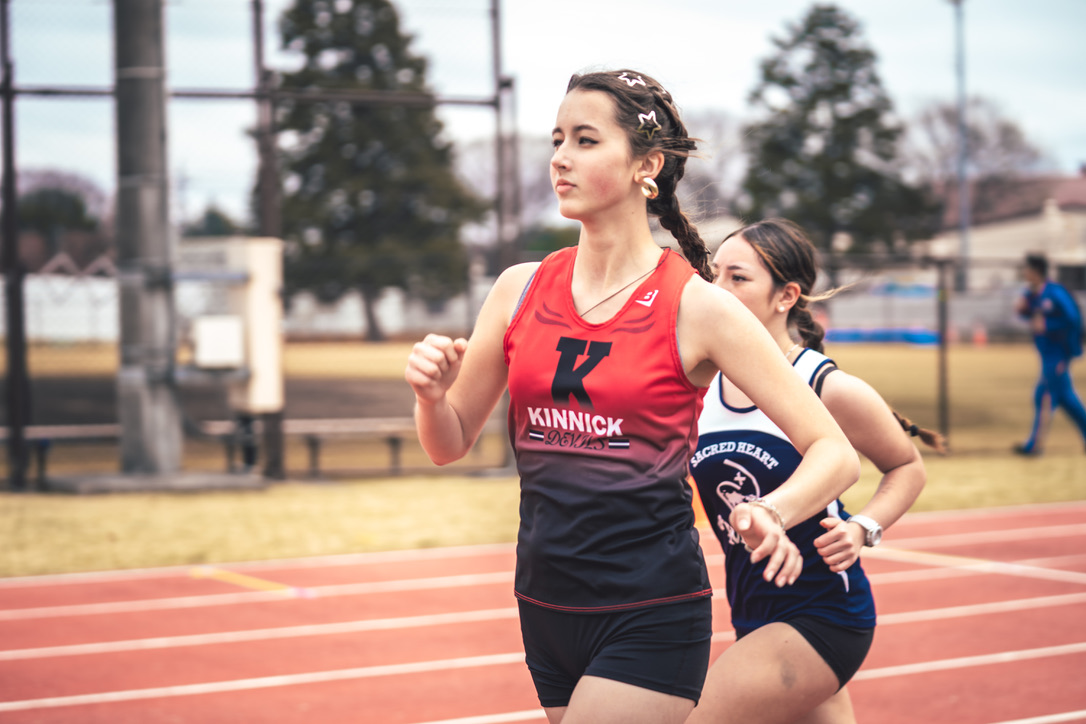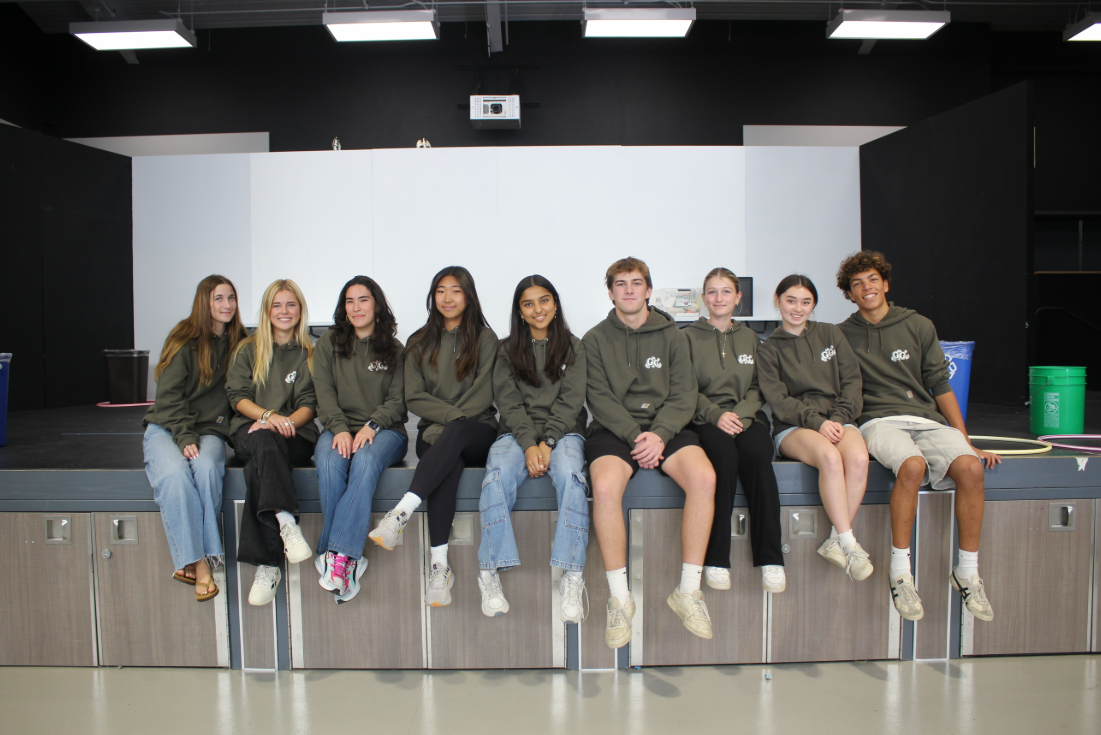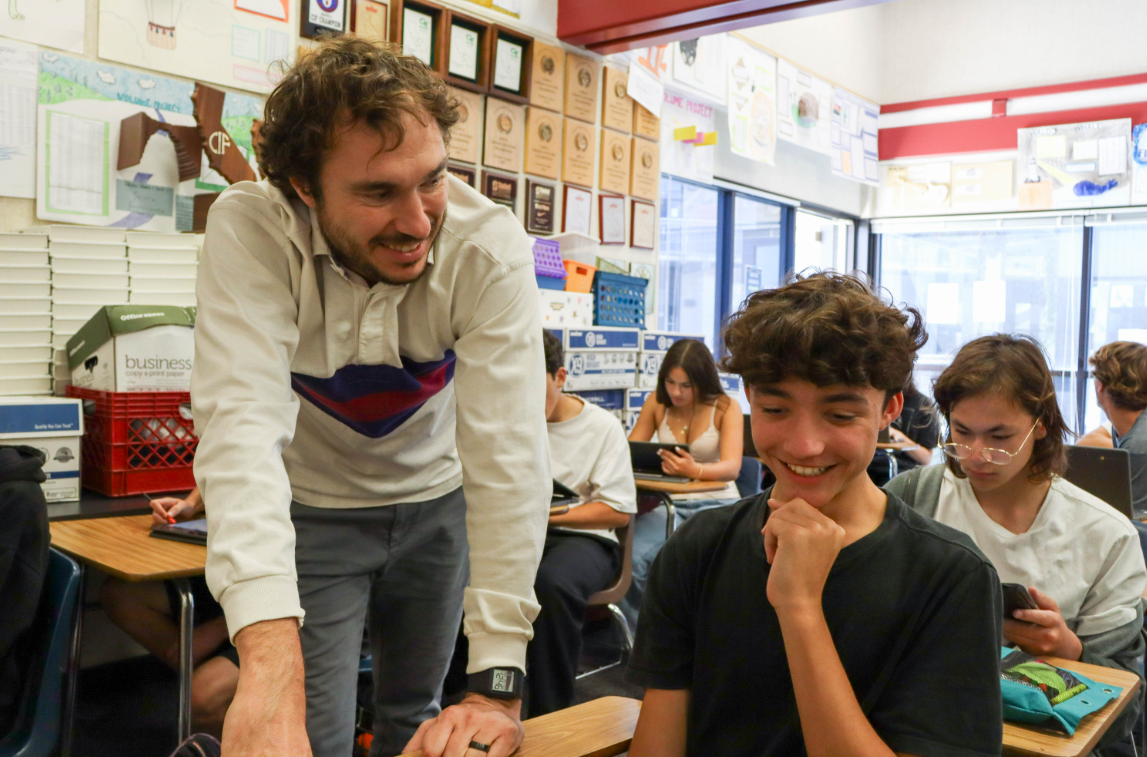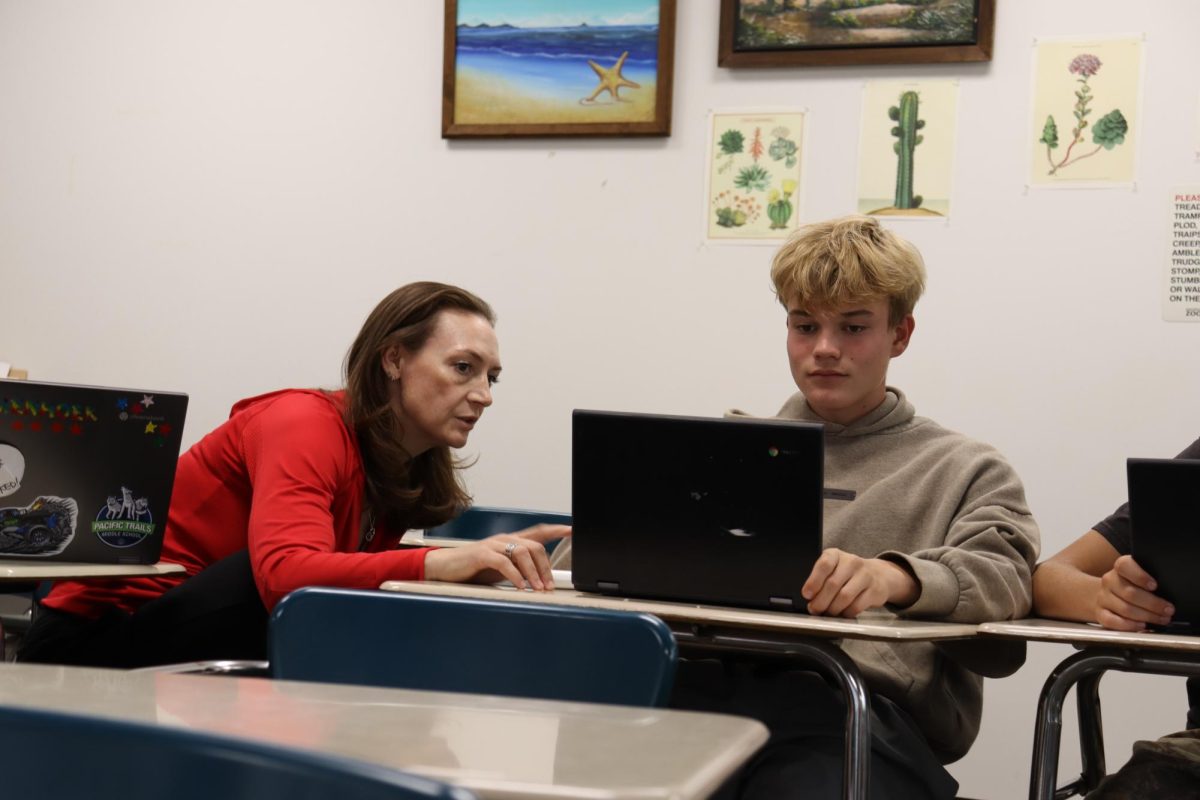
The clock strikes 2 p.m. as students in America sit through their last class, waiting for the final bell of the school day to ring. Nearly 6,000 miles away in South Korea, the alarm rings at 6 a.m. and students are just waking up, ready to begin a long day. Leah Ji (12) was once one of those students, having spent 12 years in South Korea before moving to the United States during middle school.
“We start the morning very early, like at 6 a.m. and you go to school and do the school work,” Ji said. “And when school [finishes at] 4 p.m., you need to go to a private tutor session right away, and that ends at like 10 p.m. or 11 p.m., and after you are done with that tutoring, you need to do your homework before school starts. So basically, you [sleep] at like 3 a.m. to 4 a.m. then wake up and go to school. That’s [the] regular cycle.”
After intensive studying on the weekdays, most students spend their weekends being tutored in subjects such as math, English and science, according to Ji. Such routines are established from a “young age, starting from elementary school.”
“Most of the middle school students [finish the high school curriculum] [years] earlier,” Ji said. “So most of the sixth graders know how to do derivatives and integrals.”
By the time students reach high school, they are already studying for college. College admissions in South Korea are more focused on exams and academic records. Students take the College Scholastic Ability Test typically in their final year of high school, and universities take these scores into consideration when making admissions decisions.
“We mainly focus on the universities in Seoul,” Ji said. “So if you don’t get [into] any university in Seoul, you’re marked as kind of a failure. [In the U.S] you can apply to a different bunch of colleges, like 20 or even more. But in Korea, it’s like a limited college you can apply to, so there’s like seven or 10. So if you get rejected from those colleges, you have to redo the high school year … you have to do it again … just by yourself.”
In South Korea, compulsory education consists of six years of elementary school and three years of middle school. While high school and college are optional, the majority pursue higher education, according to a Statista study.
“Every November you take [something] like [the] SAT in America … [and] there’s a different grading system in Korea, so one is A+, two is A-,” Ji said. “If you don’t get a one, you need to take it again, because if you don’t get any ones, it’s kind of hard to go to a university in Seoul.”
Seoul is home to the most prestigious universities in the country. The “SKY” universities, consisting of Seoul University, Korea University and Yonsei University are the top three schools many students aspire to attend.
“My parents were not like … Korean parents … who forced you, like you need to study,” Ji said. “But they were kind of like, ‘you need to go to universities that are in Seoul, not outside of Seoul.’”
Getting an A in school is hard, according to Ji. Each letter grade is divided into five levels, in contrast to the typical American grading system where A’s consist of A+, A and A-.
“In our school, we don’t have [that] grading system, like there’s no first place or second place,” Ji said. “But in Korea, there’s a bulletin board. There’s like a whole [grading system] everyone’s on … so you know who’s … the first person in [the] school … so just by looking at the numbers, you get so nervous, and … it’s like a ranking.”
Despite the emphasis on academics, extracurricular activities are “less competitive,” according to Ji. Unlike high schools in America where sports are customary and after school activities are considered in college admissions, these are rare in South Korea. Grade point average is “the most important thing,” according to Ji.
“As a Korean student, you need to just focus on studying and GPA and stuff,” Ji said. “But when I came to America, you needed to do the extracurriculars out of school. So that was kind of hard for me to do. You need to take care of GPA and extracurriculars [like] volunteering, [so that was] kind of hard.”
English is one of the streamlined focuses of the Korean school system.
“There are English kindergartens in Korea, so from a very young age, our parents kind of forced us to go to an English tutor session every day,” Ji said. “And we think that English is a … really important language … so we need to learn from a young age.”

To Gabriela Morillo Dal Piccol (9), who lived in Barcelona, Spain from kindergarten through second grade, the American college application process is more competitive and foregrounded in the U.S.
“There’s not nearly as much of a hyper fixation on getting into a good college,” Morillo Dal Piccol said. “Obviously, there’s better schools and less prestigious schools, but there’s not this whole thing about [the] Ivy Leagues, the top schools. People mostly don’t have to do, for example, extracurriculars and things like that to go on their college apps.”
College applications consist of “primarily taking exams” and an evaluation of school records; therefore, they are more “academic based,” according to Morillo Dal Piccol. In Spain, students must complete 10 years of compulsory education, which includes primary and secondary education (ESO), until the age of 16. Later, they can choose whether to go through Bachillerato, an upper-secondary two-year program meant to guide students into college studies.
“Most people, even though it’s not required, take the two extra years of Bachillerato to pursue their university education,” Morillo Dal Piccol said. “In Bachillerato, it’s kind of like, you focus more on a specific field … it’s kind of like pre-college a little bit, just to prepare for what you want to matriculate in once you’re in university.”
While extracurricular activities are “equally as common” in Spanish schools, according to Morillo Dal Piccol, they exist for “different reasons.”
“Here, a lot of people do extracurriculars because it might look good on college [applications],” Morillo Dal Piccol said. “[In Spain], a lot of people take English classes after school, or they’ll do a sport just because they like that sport. Obviously, people do that here as well, but there’s not that added pressure of, ‘oh, I need this to appeal to a college.’”
Much like Ji’s experience facing challenges in the extracurricular activities encouraged — or even demanded, Morillo Dal Piccol also felt the system can sometimes dictate individuals into certain “molds.”
“The good thing about schools here is, obviously, there’s that integration of community and networking and just meeting other people and focusing on your passions and such,” Morillo Dal Piccol (9) said. “There’s a lot of options, but at the same time, it all kind of becomes strange regardless, because you have this pressure to conform to what is wanted from the college.”
In terms of daily school life, Morillo Dal Piccol finds the U.S. more eventful, based on the stories she hears from her cousin back in Spain.
“My cousin says school here is a lot more fun,” Morillo Dal Piccol said. “I think they find ways, at least with our district, to … integrate the community, like sports games, having pep rallies, stuff like that. They don’t have that [in Spain] … [they] tell me [that] they go, they ‘die’ for six hours [in school], and then they come back.”
French and German were the only languages offered as electives in most Spanish high schools, according to Morillo Dal Piccol. While the secondary part of school involved electives, they were more “academically focused” compared to what is offered at TPHS, according to Morillo Dal Piccol.
“Here we have a huge array of electives to choose from, but over there was, like one year you get a certain selection, another year you get another selection,” Morillo Dal Piccol said. “In total, you’d have maybe, like three things to pick from … and it wouldn’t be creative and liberal.”
Despite a narrower range of electives, Morillo Dal Piccol noticed a stark difference in the curriculum of the two schools she attended — one in Spain and the other in the U.S.
“Even when I was in second grade and I moved here in third grade, I was already ahead of my peers, even though I was still adapting to a new environment and these languages … academically, I was doing much stronger than my classmates,” Morillo Dal Piccol said. “And I think since it’s less focused on that social, community [and] having fun [in Barcelona] … it’s just school, do work … so we were more … not aggressive, but disciplined in that sense.”

Catalina Baraya (11), a student who just recently moved back to the U.S. from Japan last August, observed differences in school life more from an overarching cultural dissimilarity. Though Baraya attended an American international school with fully English-taught classes, it was not the same as attending school in the U.S.
“Even if you’re going to an American [international] school, in a different country, the standards are very, very high because … you’re not in your own country,” Baraya said. “… Since you’re in a foreign country, you already have an opportunity that not a lot of people have, so they’re expecting you to succeed past what is the very basic demand of you here.”
Baraya’s school was competitive, not only because of the social expectations placed on foreigners, but because of its size and academic rigor as well.
“My school was really small, compared to Torrey Pines,” Baraya said. “So I would say academically, it was very competitive. You knew who the top 1% of academic people were, and you knew who your valedictorian [is] of your year … [so] you were already discouraged by your sophomore year. But, I would say, it is more competitive just because [of] the number of students and everybody’s so connected, like everybody knows everybody … you know what you’re up against, and you know that there’s a limited number, and you’re either on the low side or the high side.”
Baraya had already been studying Japanese on her own when she moved to Japan. She hopes to pursue higher education in Japan at universities such as Waseda University, Temple University and Sophia University.
“What a lot of people around me did was, you either come back to America or you go to school in different countries, because you already had that global perspective,” Baraya said. “I personally did really want to go to university in Japan, just because I spent my formative teen years there, so … when I moved [to TPHS], I felt so out of place. Even though I did go to an American school [in Japan], [the school] was like a bridge between the two [countries], and I was thinking [in] this in-between world … I felt more connected to Japan than I did here.”
Attending an American school in Japan did not prepare Barraya for high school life in the U.S.
“When I moved to Japan, I was pretty prepared,” Baraya said. “Visually, I wasn’t expecting how much I was gonna stick out… in Japan, it’s very much like, here’s your box. You’re inside the box. Stay in the box. But here it’s like, you can draw off the box. I forgot how people are very talkative here … I was so used to, ‘don’t speak unless you’re spoken to’ … so it was definitely a culture shock here, plus just how expensive everything was, because the yen rate was really low back when I lived there.
Although cultures differ drastically, some international students adapt well, while others struggle.
“90% of [the students adapted to Japanese culture],” Baraya said. “You had your outliers, the ones who did not want to be there, the ones who missed America so badly … But a lot of us, we had our thing. Everybody was adapting to Japanese culture, even if you didn’t speak Japanese; we knew [things like] ‘don’t be loud on the train.’ You knew the basics.”
Social life was also different in Japan.
“The fun thing about being a teenager there was that while our parents were working, our parents felt safe enough to let us out in Japan, wherever, because Japan is so safe, we would just explore,” Baraya said. “We would just go to random villages and walk around.”
In Japan, nine years of education is required: six years of elementary school and three years of middle school. High school and college are optional, yet many naturally follow the path. Though similar to South Korea in that college applications are academic-based, after-school programs are prosperous as well.
“I had traveled a lot back then, and we would have flights that were like five in the morning, and I would see students,” Baraya said. “I would see students on the first train just passed out … I’ve seen a lot [of] students just so zoned out and about to fall asleep … I would see kids just entering the train station at nine [p.m.].”
High school students in their final year take the Common Test for University Admissions, which determines their qualification to apply to certain universities. They then proceed to take school-specific exams that determine their eligibility for admission. While other methods are provided under certain conditions, high school records and exam scores are the mainstream.
“Personally … I would say essays [are better for students], because you really get to shine through,” Baraya said. “You can write about your personality. And I guess you could say that if you went through something, you could really show that off. But I feel like I would personally enjoy an exam better, because the essays are sometimes, to get your point across, you’re in a sea of so many different people. And they’re not only looking at your academics, they’re looking at your personal story as well. So I feel like when you put those together, it kind of blurs the line.”
Across the continents in the United Kingdom, secondary education is divided into lower and upper secondary levels, and students are required to complete education through 11th grade. Because Britain has a national curriculum as opposed to the U.S., where curriculum varies by state and district, students must pass the national examination in 11th grade. Then, they can choose whether to take A-level courses, a two-year program specialized in fields of interest. Upon finishing the two years, students begin applying to universities, which typically last three years at the undergraduate level.
“I think the high school part right up until 11th grade is pretty similar in that sense, but in your senior year, you would begin to specialize,” Lisa Callender, AP English Literature and AP Seminar teacher, said. “And again, there’s good and bad to that. I mean, do you really know at your age what you want to do? Your parents might know what they want you to do, but do you know, and the joke in the U.K. was, ‘oh, ask an American about something, they’ll say, oh, I took a class in that because we’ve got that salad bowl approach,’ but … in some ways, I kind of think that’s not so bad, to find yourself in your 20s is a little bit more reasonable, I think.”
Students still must take the A-level exam as they list their university choices, hence “[college] acceptances are provisional,” according to Callender. Callender has taught in schools in the U.K.
“[Colleges] say [they] will accept you, but you have to score top scores on your A-level exams,” Callender said. “So as they exit that two-year college, they take exams as well, national exams, and … some universities like Cambridge and Oxford, would definitely expect a certain score. So what I love about it is you can’t get senioritis at all, because you have to take these exams, like the AP exams in May, and you know that if you don’t get a certain score on them, then you don’t get your first choice college, and then you move down to what your second or third would be.”
Almost like a tradition, seniors in the U.S. face “senioritis” every year, experiencing a decline in motivation as the school year nears an end, partly driven by the relief that comes when college decisions roll out in March and April. In the U.K., however, the exam schedules and college system keep them focused until the very end of the academic year.
“It’s unfortunate that it’s kind of like that,” Callender said. “But it’s definitely different in the U.K., and I think that’s how they prevent that, is that you really don’t know what college you’re getting into until almost August, and they start in September, and that’s because you’re just awaiting your exam scores and see how you did. And when people apply from America, oftentimes the U.K. system requires certain AP exams or certain scores on the SAT to kind of be comparable.”
Almira Taracki (10) moved from Turkey at the beginning of her freshman year. While Taracki had planned on coming to the U.S. for college as an American citizen, she arrived earlier than planned when her parents suggested they move earlier to get used to things.
While her private school in Turkey “actually valued English education,” Taracki felt a discrepancy between what was taught and what was actually useful in conversations.
“Here, the English you actually need is the daily slang English, that’s what you need to keep up with the daily conversations,” Taracki said. “In Turkey, they only teach you grammar and I don’t even use half of this stuff. It’s not really useful. So they do teach it, but even if you do learn it … you’re not going to use [it].”
Taracki described Turkey’s college system as less competitive.
“And obviously, everything starts from opportunities here,” Taracki said. “There’s a lot of options that you can do, like community college, if you don’t want to go to college at all. You have other pathways … you have a lot of opportunities. In Turkey, it’s like either this or that. There’s two curricula after sophomore year. So in junior year, they either choose to go with the country’s curriculum, the Turkish one, or they do International Baccalaureate.”
Many high school students aspire to attend college outside of Turkey.
“If they want a good education, if the goal is going to a good university or college, then [it is] definitely [common for students to consider going to another country],” Taracki said. “I know very few people who want to actually stay in Turkey, but that’s obviously about [the] country’s educational stuff.”
Taracki feels the college system in the U.S. offers more opportunities and flexibility.
“In Turkey, college is a survival,” Taracki said. “And if you don’t go to college, you’re the ignorant part of Turkey, which is really sad. A lot of the teens go to college just to prove that they’re educated. Here, [maybe] you do all of these things for show in high school, but … at least college is a big goal, and you have a passion [to go to] college … and you go to do something you love, like majoring in whatever you want to.”
Like Morillo Dal Piccol, Taracki noted that the wide range of electives offered is something that makes American high schools unique.
“So when I came here, I was shocked, because initially I wanted to major in culinary,” Taracki said. “So I was like, ‘oh my god, they have a culinary class.’ And there’s so many, not only towards the job you want to do, but also a lot of leadership positions. In my school, we did have a student council and a class president, but again that’s because it was a private school, and it was only a show. But here you definitely have a lot more opportunity towards the thing you want to do … I think it’s better because everyone has different dreams and goals for the future.”
Taracki emphasized the opportunities that are made available in the U.S.
“Preparing for college … in Turkey, it’s like you’re a 15 year old kid … we give you what to do, just do it,” Taracki said. “Here … I felt more respected by my teachers. Plus I paid thousands of dollars in Turkey for them to respect me, and no one did … that’s really valuable to me.”
Taracki also observed differences in American student social behavior.
“The first time I went to the learning commons, I was like, ‘Oh, my God, I’m alone and literally doing homework, are they gonna think I’m a nerd?’” Taracki said. “And I’m like, nobody cares. No one’s going to see you passing by. So I really like that. It’s like the stereotypical things don’t really matter. In Turkey, you would definitely be bullied for that.”
While Taracki stated that she is “not a fan of American culture either,” she finds it “fun” that there are students from all over the world and notes it “comforting” at the same time to have friends all over Turkey who “get [her],” since Turkish culture is “not similar at all.” Whether it be academic, social or cultural differences, the U.S. is where Taracki sees her near future.
“[My parents] would be like, ‘you’re so used to being given something,’” Taracki said. “It’s annoying to hear, but they give everything to you, and you never know when you don’t have that thing. And most of the time, applying to colleges, they’re not going to give your essay to you, you have to figure out a way to do it yourself. So I feel like that gets you prepared for it. And Turkey is really straightforward. I’m glad we moved and if I ever had to go back, I would still want to come back for college.”
Your donation will support the student journalists of Torrey Pines High School. Your contribution will allow us to purchase equipment and cover our annual website hosting costs.








